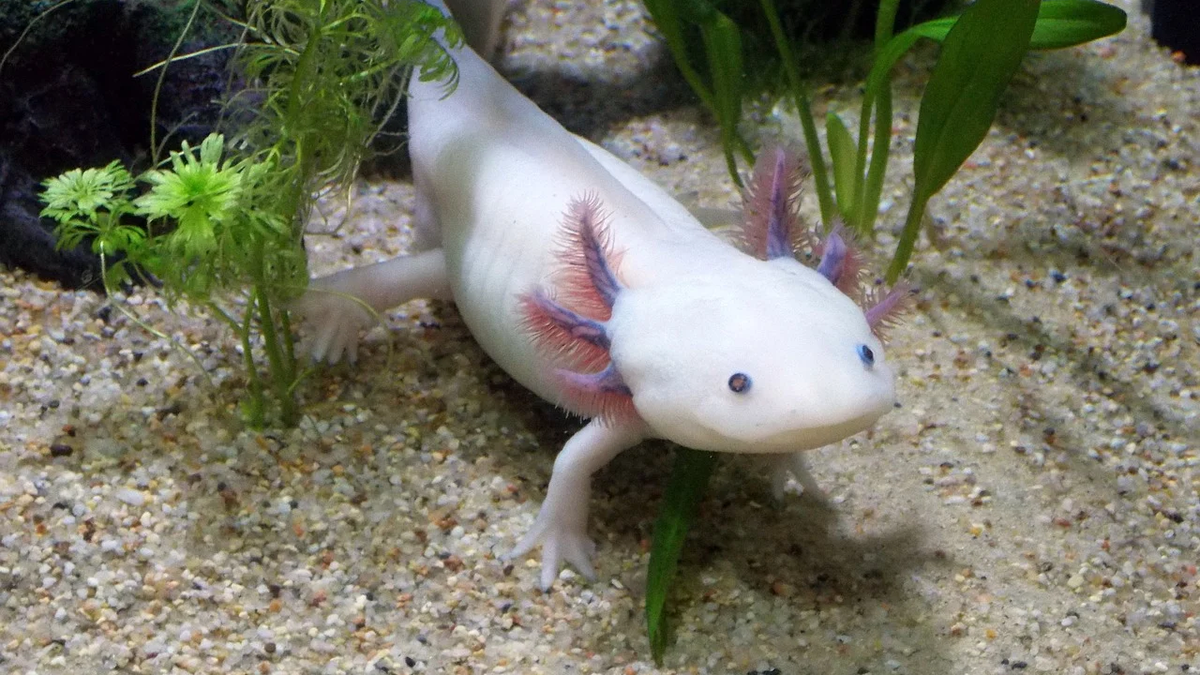Axolotls and Organ Renegration | 25 May 2023
Why in News?
The Axolotl, a species of salamander( (lizard-like amphibians) possesses an extraordinary ability to regenerate lost body parts, inspiring researchers to delve into the secrets of this unique regenerative power.
- The focus of their investigations lies in understanding the elusive o (for “ova deficient” gene, which plays a pivotal role in the axolotl's regenerative process.
What is Axolotl?
- About:
- Axolotl are amphibians that spend their whole lives underwater. They exist in the wild in only one place—Lake Xochimilco near Mexico City, a network of artificial channels, small lakes, and temporary wetlands that help supply water to nearby Mexico City’s 18 million residents.
- Lake Xochimilco is also a UNESCO World Heritage site
- Axolotls, like humans, contain two copies of every gene – one inherited from the father and the other from the mother.
- Axolotl are amphibians that spend their whole lives underwater. They exist in the wild in only one place—Lake Xochimilco near Mexico City, a network of artificial channels, small lakes, and temporary wetlands that help supply water to nearby Mexico City’s 18 million residents.
- Prey:
- They feast on a menu of mollusks, worms, insect larvae, crustaceans, and some fish.
- Special Feature:
- They have fascinated scientists for their ability to regenerate lost body parts and for their rare trait of neoteny, which means they retain larval features throughout life.
- These features are also studied by cancer researchers for their unique resistance to developing cancerous tissues.
- Even though they are amphibians, axolotls remain aquatic throughout their lives but they are now almost extinct in the wild.
- They have fascinated scientists for their ability to regenerate lost body parts and for their rare trait of neoteny, which means they retain larval features throughout life.
- Threat:
- Axolotl populations have declined considerably due to a combination of habitat loss (largely driven by Mexico City’s continued urbanisation), water pollution, and invasive fish species (such as carp and tilapia, which compete with axolotls for food and prey upon them).
- Protection Status:
- International Union for the Conservation of Nature and Natural Resources (IUCN) has classified the axolotl as a critically endangered species since 2006.
What is Organ Regeneration?
- About:
- Organ regeneration is the process of restoring or replacing damaged or missing organs or tissues in living organisms. It is a fascinating phenomenon that varies widely among different species, from plants to animals.
- Organ regeneration has enormous potential for medical applications, such as treating injuries and diseases that affect human organs.
- Organ regeneration is the process of restoring or replacing damaged or missing organs or tissues in living organisms. It is a fascinating phenomenon that varies widely among different species, from plants to animals.
- Major Processes:
- Remodelling: This involves reshaping and reorganising the existing tissues to form new structures.
- For example, plants and some sea creatures, such as jellyfish, can replace missing parts by extensively remodelling their remaining tissues.
- Blastema formation: This involves growing a mass of undifferentiated cells at the site of injury that can differentiate into various cell types and form new tissues and organs.
- For example, some animals such as salamanders can regenerate missing parts by first growing a blastema.
- Compensatory hypertrophy: This involves increasing the size and function of the remaining part of an organ to compensate for the loss of another part.
- For example, in humans if one kidney is removed from a human, the other enlarges.
- Remodelling: This involves reshaping and reorganising the existing tissues to form new structures.
- Other Example of Organisms that can Regenerate Organs:
- Planarians, Zebrafish and Sea cucumber.

